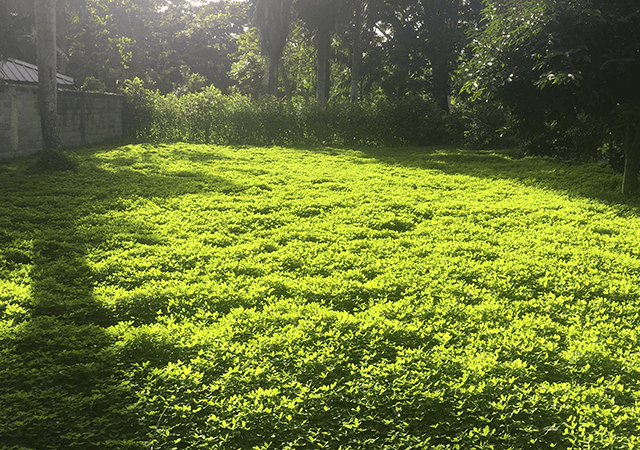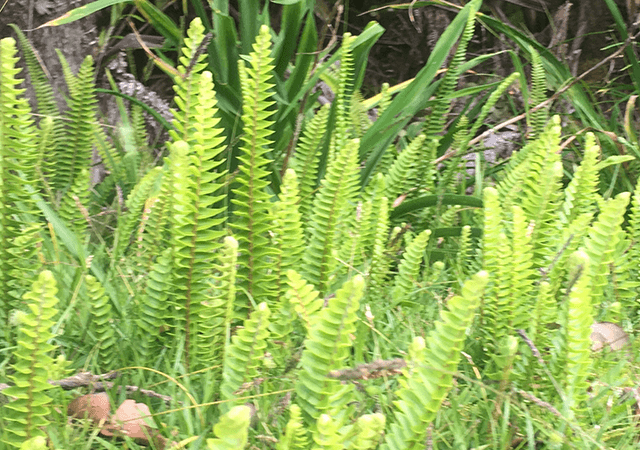Much of Hawaiʻi’s soil was once covered by native plants that did an excellent job of stabilizing slopes. Due to human impacts, exotic plants have overtaken much of this native flora. This, combined with overgrazing, has led to exposed soils susceptible to runoff and overgrowth by weeds and other exotic plants. Exposed soils have resulted in unstable slopes vulnerable to excessive runoff during heavy rains, or normal erosion from everyday elements.
Left unchecked, unstable slopes can create a host of problems for the environment, your land, and the wider community. Runoff can negatively impact surrounding landscapes and coral reefs. Unstable slopes also pose a threat to property ownership as landslides and erosion can physically detract from land, resulting in a loss of real estate. Additionally, topsoil erosion adversely affects overall soil health by leaching nutrients and decreasing biological activity. Unstable slopes also increase the likelihood of landslides, creating hazardous conditions for the surrounding community.
A Regenerative Solution
The conventional approach to slope stabilization utilizes materials such as concrete and rock. These can fail over time, and often lack the dynamic contributions provided by a living infrastructure. A more integrated, biological solution, utilizing the appropriate suite of plants, can often remedy the problem, while yielding additional benefits, such as pollinator habitat.
Slope-stabilizing plants support a dynamic, living system that will be more resilient over time, building soil and regenerating withering landscapes. Regeneration improves the health of soil by increasing beneficial living organisms and protecting against erosion. Plants also route water back into the soil instead of shedding it.
Right Plant, Right Place
A fully functional, slope-stabilizing plant system must include groundcovers and shrubs. Plants have different rooting tendencies; some root laterally (parallel to soil level) and some are tap-rooted (growing straight down). Plants in an integrated system must stabilize the soil both laterally and vertically for best results. Many native plants can fulfill these requirements; the ideal scenario is to prevent erosion with complete soil coverage.
The following list is a brief summary of especially useful plants for slope stabilization. Remember to consider the environmental needs of any plant you select for a given site (e.g. elevation, rainfall, and soil moisture content).
Prostrate Ground Covers (<1 foot)
- perennial peanut (Arachis pintoi)
- alena (Boerhavia repens)
- seaside heliotrope / kīpūkai (Heliotropium curassavicum)
Ground Covers (1 ft+)
- kupukupu (Nephrolepis cordifolia)
- ‘ilieʻe (Plumbago zeylanica)
- comfrey (Symphytum x uplandicum)
Short Shrubs
- ʻākiʻa (Wikstroemia uva-ursi)
- vetiver (Chrysopogon zizanioides)
- cast-iron plant (Aspidistra elatior)
Tall Shrubs
- tī / laʻi (Cordyline fruticosa)
- red ginger (Alpinia purpurata)
- maiapilo (Capparis sandwichiana)
Maintenance Considerations
Selecting plants with low maintenance needs will save you substantial costs in time and energy. All the above-mentioned plants require minimal maintenance.
Strategic, seasonal pruning of both shrubs and groundcovers will improve the health and longevity of your plants. For example, vetiver—which is usually installed in a continuous hedge row—should be trimmed at least once every six months with a hedge trimmer.
Applying a balanced fertilizer or organic compost will also increase the health and longevity of your plants.






